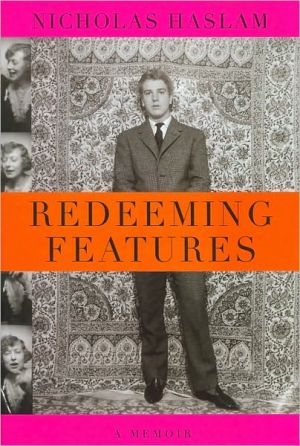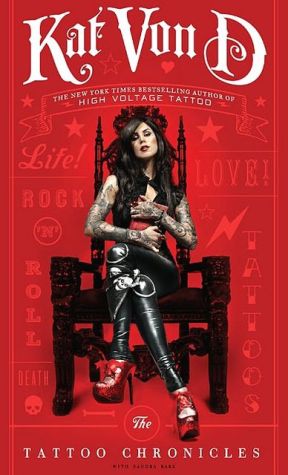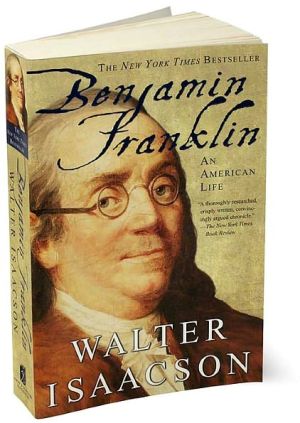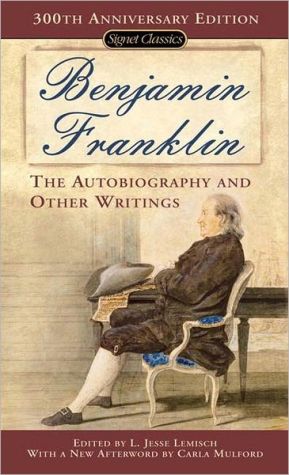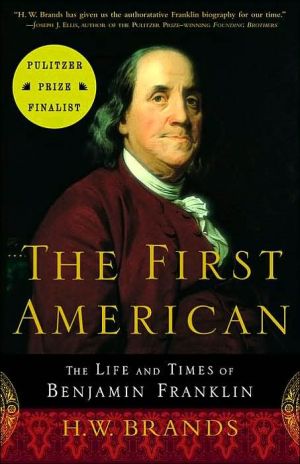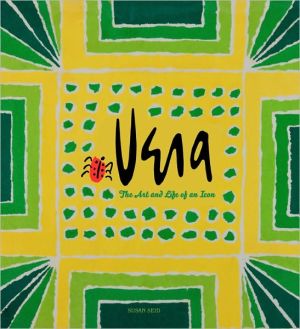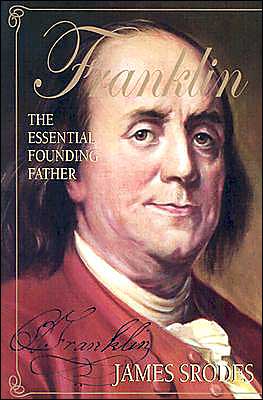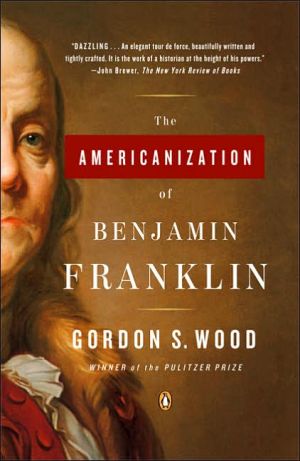Redeeming Features
From British interior designer Nicholas Haslam, a dazzling and witty account of a frenetic and full life—from the 1940s to the present—in Europe and America, in a crowd of friends and acquaintances that includes virtually all of the cultural icons of our time. \ Haslam has found himself at the center of some of the most interesting circles wherever he is—at parties, opening nights, royal weddings. In London in the late 1950s he crossed paths—and more—with Cecil Beaton, Francis Bacon, Diana...
Search in google:
From British interior designer Nicholas Haslam, a dazzling and witty account of a frenetic and full life—from the 1940s to the present—in Europe and America, in a crowd of friends and acquaintances that includes virtually all of the cultural icons of our time. Haslam has found himself at the center of some of the most interesting circles wherever he is—at parties, opening nights, royal weddings. In London in the late 1950s he crossed paths—and more—with Cecil Beaton, Francis Bacon, Diana Cooper, Greta Garbo, Lucian Freud, David Hockney, David Bailey, and Noël Coward. A time living in the still unspoiled south of France was an education in everything from the work of Buñuel to the style of toreros like Dominguín and Ordóñez. In Paris he met Jean Cocteau and Janet Flanner, and, in Saint-Tropez, danced with Brigitte Bardot. In the 1960s, in New York, he encountered Dorothy Parker, Cole Porter, Andy Warhol, Jack Kennedy, Joan Didion, and Marilyn Monroe while working in the art department at Vogue and later as art director, following Henry Wolf, at Huntington Hartford’s Show magazine. After Show, Haslam moved to a ranch in Arizona to raise Arabian horses—Truman Capote and John Richardson, among others, came to stay—and he began designing and commuting to Los Angeles to decorate for the stars.Back in England in the 1980s, he worked on David Bailey’s Ritz magazine, attended the wedding of his cousin Diana Spencer, and designed for everyone from the financier James Goldsmith to rock star Bryan Ferry.Redeeming Features is about much more than documenting a life among the celebrated and the eccentric: it is a vivid, at times humorous and moving portrait of a way of life that has all but disappeared. Haslam has an exacting eye for the telling detail and his story is a compelling and wholly fascinating document of our times.Publishers WeeklyIn this chatty, self-absorbed memoir told with a hefty dose of name-dropping and a devout reverence for fame and fortune, British interior decorator Haslam proudly reveals his intimate connections with many members of British and American high society from the 1950s to the present, from his distant relation to Princess Diana to his brief but adoring encounters with Tallulah Bankhead, Mick Jagger, the Beatles, Joan Crawford, and many more. Indeed his busy social life started young; for most of the first hundred pages he is a fairly wide-eyed ingénue at Eton, followed by stints in London, New York, California, and back to London as a magazine editor, interior designer, and columnist. His has been a life where everyone and everything is “darling” and “divine”; in his world, elevator doors open to reveal Salvador Dalí, and Andy Warhol is a frequent and amusing dinner companion.” While claiming to be “telling all,” Haslam hides most of what makes many memoirs truly personal and affecting; in exchange readers get a chance to feel as if they are on a first-name basis with the stars. His superficial obsession with high society is, still, highly entertaining and refreshingly honest, and will delight those who travel in international circles of design and fashion. (Dec.)
My daily routine at Vogue was about to be dramatically transformed. I had heard about Diana Vreeland, who was the fashion editor of Harper’s Bazaar (Vogue’s only and at that time more chic rival) from Cecil Beaton, who, having worked with her, and admired her unique style for several decades, was a confirmed fan, and also, on our flight across the Atlantic, from Claire Rendlesham, to whom Mrs. Vreeland was an idol. Suddenly a rumor was buzzing around the corridors of the Graybar Building. “Mrs. Vreeland is coming. Coming here, coming to Vogue.” Sure enough, a day or two later Serena Russell and I received invitations—flatteringly the only two members of staff below the rank of editor to do so—asking us to the party at the Colony Club to welcome Diana Vreeland into the bosom of Condé Nast.\ Mrs. Vreeland’s appearance was breathtaking. She didn’t merely enter a room, she exhilarated it, and all eyes immediately locked on her, hypnotized. Her onyx black hair, sleeked back from a sloping brow, revealed ears powdered terra-cotta red with a hare’s-foot brush; her peony pink cheeks, the pronounced crimson lips below a long nose, her cranelike walk and pelvic-thrusting stance had all been described to me, but her actual presence was like a sock on the jaw. You knew you were seeing a supernova. It was not long before I discovered that behind this astonishing exterior lay a much-heralded mind not only of dazzling fantasies (and a sense of history, albeit often reordered to suit them) but of originality of thought, and a carefully shrouded or, rather, disguised loving tenderness.\ Her immediate, astounding action on arrival at Vogue was to have Jessica Daves’s formerly dreary office lacquered shrieking scarlet, and carpeted in leopard skin—“tigre” (pronounced “teegray”), as she called any big-cat markings, whether tiger, leopard, or ocelot. There exists a photograph of her in the room, at her black desk below a vast pinboard smothered with drawings and notes, just visible among them the painted card I’d done to welcome her on her first day. I was to get to know this room well. One of my jobs as a junior in the art department was to attend to the retouching of any fashion photography, a serious matter at that time as, quite apart from there being no question of nudity, we had to touch out navels, such innocent features being then—unbelievable as it now sounds—considered obscene. Each morning, after the ritual of her eleven o’clock entrance, would come the summons: “Send for Rembrandt.”\ Armed with my layouts, and Mrs. Vreeland with her red wax pencil, we would spend an hour improving on the beauty of those impossibly beautiful girls: Suzy Parker, Verushka, Dovima, Frederica (and before long, Jean Shrimpton and Twiggy), as assistants trundled in racks of clothes for her approval, and hats, shoes, jewels, gloves, furs, cosmetics, wigs, and false hair: “It’s not fake anything, it’s real Dynel,” was a Vreeland remark that became an advertisement. Anything she liked was “diviiine,” while “Uuum?” meant Good God, no!\ In between there would be digressions into the history of costume: “Sewing in a sleeve at that angle was first done in Poland in the 1770s,” or “Schiaparelli invented that wrapped skirt in her collection the summer before the war. Couldn’t wait to wear it.” Constructively critical, Mrs. Vreeland was never bitchy. She also had the brilliant knack of making one think one had just come up with the idea she had subtly put into one’s head.\ Foreign lands, and especially the then-exotic ones like China, Russia, and Turkey, were a lifelong passion for Diana, due to her supposed birth in France and childhood in England. For Europe she held a special thrall, and she was particularly fascinated by “swinging London” and, by extension, me.\ My father had sent me a newspaper clipping of a new pop group from Liverpool. Being from Lancashire himself, he’d been intrigued by them, though he was the least musical of men. I showed this article on the Beatles to Mrs. Vreeland: “They’re too adorable, get them photographed immediately!” She sent me to England to arrange it. The resulting portrait, taken by Peter Laurie after a gig in Northampton, was the first photograph printed of the Beatles in any American magazine. In those days the fans threw flowers, rather than bottles and knickers, onto the stage. I gathered these up into posies and passed them to the boys. Holding them, these wild young cannibals sat there looking as innocent as Victorian bridesmaids.\ Young aristocrats, too, were grist to Diana, and the pages of Vogue soon had spreads on Nico and Alastair Londonderry in their David Hicks–designed house in Hampstead; of Desmond and Mariga Guinness with white-blond children at their Gothic Irish castle, Leixlip; or of Peregrine Eliot and his wife, Jacquetta, at Port Eliot, an intensely romantic country house on the edge of the sea in Cornwall—places and people surely as foreign to the American reading public as the inhabitants of Timbuktu. Her antennae being ever on the qui vive, she was intrigued to hear that my brother’s Eton contemporary Mark Birley was opening a London nightclub named after his wife, my friend Annabel Vane-Tempest-Stewart. She sent me over to arrange photographs of the unutterably English crowd that would be gathered for the opening night. While I was there, Margaret Case telephoned me in a panic.\ “Help,” she said. “Main’s dying!” Heavens, I thought—had the electricity in New York failed? Then she explained. Her great friend the dress designer Mainbocher was in mortal danger unless I could collect the right pills for him from a doctor in London. I flew with the precious package back across the Atlantic and delivered it to Margaret. Mainbocher recovered and, in gratitude took me for dinner à deux at Le Pavillon. (It’s odd that the only two times I dined at Le Pavillon were with world-famous couturiers; the other was Yves Saint Laurent. This time the lights had failed, as it was during the great New York blackout.)\ Diana’s and my working relationship soon became a friendship outside the office. Diana and her husband, Reed, often invited me to join them for Sunday lunch, a fixture of their weekend. The interesting and beautiful young, and especially at this time Italians, were meat and drink to Diana, and one could be sure that girls of the aristocratic calibre of Benedetta Barzini, Verde Visconti, or the model Luciana Pigniatelli would join us. Diana particularly enjoyed evening jaunts to odd things I’d discovered, such as Chinese operetta in a pagodalike theater way down on the East Side, or tango competitions at Roseland dance hall.\ We sometimes met for lunch during the week, always in Janssen’s, the restaurant on the street floor of the Graybar Building. The most memorable of these was to come about a year later, on the day of President Kennedy’s assassination. The first news came on my (illicit) radio in the art department, just as I was leaving to join her. Knowing her family’s friendship with Jack, and particularly Jackie, I stayed a few minutes to be able to tell what I heard, and rushed to join her at the booth in the tragedy-oblivious, bustling restaurant. I blurted out, “Diana-the-president’s-been-shot-and-they-don’t-think-he’s-going-to-live.” She looked aghast, paused for a moment, and then said only, “My God, Lady Bird in the White House! We can’t use her in the magazine.” Ever the canny editor—though it must be noted that, not long after, she commissioned Horst to photograph Mrs. Johnson wearing Texas-rose yellow in the presidential drawing room.\ A few days later we watched Kennedy’s funeral on television with Françoise and Oscar de la Renta. We were all deeply moved, but Mrs. Vreeland’s eyes remained dry, her voice unusually muted. “He had a golden touch, Jack,” she said as we walked down Park Avenue. “The world will get grayer now.” I reminded her of this prediction when, an administration later, Nixon was voted into the White House. She shrugged. “What did I tell ya?”\ ___________\ Many of the invitations Margaret Case issued during my daily visit to her office upstairs on the twentieth floor were shouted unabashedly from the open-doored loo. One day she came up with the most thrilling offer possible.\ “Would ya like to have lunch with the duchess?”\ The Duchess? Of Windsor? Would I??\ “Okay, then, Wednesday, one o’clock, the Colony.”\ Wallis Windsor was a Vogue icon. Only a few weeks before I had laid out a spread on the Windsors in their Paris house. The photographs, by Horst, might have been taken, some wag said unkindly, through concrete, so wrinkle-free were the features of both duke and duchess. Her hard, lacquered head, the scarecrow body in its exquisite clothes—part Ming empress, part bang-up-to-date modern—totally dominated the beautiful rooms, the witty eighteenth-century furniture, the Meissen, the dogs, the duke, with a kind of sexual artificiality that was undeniably intriguing. I knew all the drama and anger of the abdication, of course, but by the sixties the royal family was so safely established that that particular can of worms had somewhat lost its shelf life; the king-and–Mrs. Simpson business was simply seen as a romantic love story for him or an understandable career move for her.\ But many East Coast grandees were proud of their American royal, worshiped her drop-dead chic, her sassy wit, her exaggerated jewels, her perfectionism. To others she was a hardheaded go-getter, a haughty social cipher, cadging her way off two continents. Which?\ The totem in the Horst photographs suggested both. The Colony, Thursday, 1 p.m. Margaret Case, with Kitty Miller and Cordelia Biddle Robinson, is already seated when I arrive. Our table is the best banquette, in the farthest corner, affording the longest walk to it, and the best view from it, in the room. These ladies are the duchess’s “set.” If she’s not natural with them . . . , I think. The commissionaires swing open the doors. There’s a sudden silence: Eyes swivel, forks fall onto asparagus (“Without butter, Gene, please”). Across the restaurant—cheek-kissing, air-kissing, winking, waving—comes this minute figure, the flat cubist head made higher and wider by black bouffant hair parted centrally from the brow to the black grosgrain bow at the nape, dressed in an impossibly wideweave pink angora tweed Chanel suit, concertinaed white gloves, black crocodile bag and shoes. As she approaches, not stopping, not stopping smiling, her eyes greet her friends. Then, “Hi, I’m Wallis,” to me, and, “I’ll have the chicken à la king, Gene, thank you,” to the hovering maître d.\ “We call Nicky our Beatle,” says Kitty.\ “What on earth’s a Beatle?” says Cordelia, whose voice, appearance, and mannerisms hadn’t changed since the twenties.\ (The boys had just hit New York. I had had their first record sent over from England, and taken the cover to Kenneth—my and my sister’s and Mrs. Kennedy’s hairdresser—saying, “This is how I want my hair cut.” Andy Warhol, writing later about the period in his first autobiography, credits me with bringing the English “look” to New York, with my short Italian jackets, pointed shoes, and the curtain lace with which I improvised frilled shirt cuffs under my jackets—I used to stick it on with Speed-Sew glue.)\ “Oh, the Beatles. Don’t you just love ’em? ‘I give her all my love, that’s all I do-oo,’ ” she sings. “Adore ’em. Do you know them? Oh, you are lucky.”\ Dumbstruck, near lovestruck, I simply listen to the sassy repartee. People . . . Palm Beach . . . Paris . . . until, with a discreet peek at her watch (on a chain tied to her bag, not on her wrist): “Gee, is that really the time? Can you beat it? I gotta go and meet the dook. I’ve had such fun. Good-bye, good-bye, I’ll see you all at Elsie’s on Tuesday.”\ And she leaves, now stopping at some tables, a few words, her infectious laugh as metallic as the clink of spoons in astonished onlookers’ demitasse coffees (“No cream, Gene, please”).\ The duchess was true to her word—as I was to find on several occasions. If she said she would do or send you something, or meet you somewhere, she did. On the following Tuesday I arrived at Elsie Woodward’s apartment in the Waldorf Towers. The door ahead of me was slightly open. I listened. No sound, no voices, no music, no merry glugging of martinis. Too early, I realized. I wandered on down the corridor to the elevator, to dawdle and not run into coarrivals. There was a rustle, and I turned. The duchess was also peering through the chink in Elsie’s door, equally embarrassed to walk in. She saw me. A silent peal of laughter, and she ran along to me, grabbing my arm and saying, “We must live in the same time zone. You’re early too. Let’s hide. I live upstairs but the dook’s changing. I know this place like the back of my hand. Here, look.” She opened the door to a housemaid’s cupboard. “Quick, come on, we can go in here and watch till some folks arrive.”\ We stood shoulder to shoulder in the near dark, talking about our lunch, the theater—well, musicals—food, friends; what she called “where we’ve been and who we’ve seen,” till, “I think it’s okay now. Some frumps have just gone in.” She stepped out, bandbox-fresh. “Am I all mussed up? My hay-er? No? You’re so cute to say so. Come.” So with her jewel-appliquéd black-satin-gloved hand in mine, we walked into Elsie’s party.\ ___________\ The announcement that Prince Charles was engaged to Lady Diana Spencer meant a cousin would become Princess of Wales and, it followed, the next queen. Our family relationship was fairly distant. Though her uncle Robert Spencer habitually addressed my mother as “Cousin Di,” this was due more to jocular old-fashioned manners than familial closeness, and my mother’s by-now great age, and Diana’s extreme youth put them generations apart. Until I saw the see-through skirt photographs I was hardly aware of her existence, though I had come across her sisters Sarah and Jane.\ Suddenly this enchantingly awkward girl, with her shy, downward-lashed smile, badly cut hair, and hopelessly unchic clothes was thrust into a limelight glare stronger than anyone before her had had to endure. Sometimes reveling in her Georgiana Devonshire–like position, sometimes rabbit scared in the headlights, she made her virgin way to royal status with no one to guide her, no one to ask, only a set of contemporaries who treated her new position with either unmasked envy or mild derision. A few, perhaps necessarily aristocratic, older women were wise to the danger looming. Joan Aly Khan, herself married too young to a handsome prince, believed the age gap to be exactly wrong; that if Charles had been older he would have been bouleversé by her youth. Diana Cooper, perhaps remembering attempted matchmaking with a former Prince of Wales, and slightly put out that “Lady Diana” no longer signified exclusively her, was rather appalled by the determination of her friends Queen Elizabeth and Diana’s hard-bitten grandmother, Ruth Fermoy, to force the marriage. She was, however, entranced by her namesake’s poignant allure; when that one breast peeped innocently from Diana’s silken décolletage, she observed to me, “Well, wasn’t that a dainty dish to set before a king?” And of course there were coded asides about Mrs. Parker Bowles, waiting patiently in the wings, while her husband carried on an affair with the prince’s sister.\ The preparations for the wedding included me insofar as David and Elizabeth Emanuel, the young and green couturiers Diana had selected to make her dress, asked me to decorate their salon as an appropriate setting for the many fittings this would entail. We draped yards of cream silk on the walls and trailed it over the windows, David constantly flapping his hands to indicate a need for “another zhush, another bow.” As the end result had more zhushes and ruffles than the Emanuels eventually managed to cram onto the dress itself, it must have been difficult, at the final fitting, for Diana to tell where my decor ended and her frock began.\ A few days later those yards of silk tumbled out of the coach as Diana drew up at Saint Paul’s. I had watched the procession from the balcony of the old Daily Telegraph building on Fleet Street, sitting among many newspaper grandees, a prime position engineered for me by its owner, Seymour Camrose, and his power-behind-his-Fleet-Street-throne sister-in-law Lady Pamela Berry. There were, naturally, oodles of champagne and lashings of foie-gras, but the most delicious taste was left by the beauty of Princess Michael of Kent, in a hat and dress of palest lilac, like a twilit swan, passing along the cheering crowds in the Strand below. One understood then and there why the family she had recently married into might resent her style and looks as much as they had those of her equally beautiful mother-in-law, Princess Marina.\ Once the cavalcade had passed by on its return journey, its leader a near-child on her way to a tongue-tied honeymoon, there was a scramble to leave for the party the queen was giving to celebrate her son’s marriage. In order that important wedding guests would not experience any let-down, she had decided that her party should begin directly after the palace balcony appearances. And thus at 5:30, I changed into black tie and walked into the anteroom at Claridge’s, to the most extraordinary sight imaginable. Sitting in a semicircle, their eyes glued to a hastily erected screen, were the major participants in the ceremony, watching themselves on film that Liza Shakerley had somehow spliced together in less than an hour. Besides the entire royal family, and every king and queen regnant or exiled, there were Nancy Reagan, Princess Grace of Monaco, the Empress of Iran, the Crown Prince of Japan, archbishops, archimandrakes, princelings, and potentates. “You know the Queen of Romania, don’t you?” David Hicks said at my elbow. “Anne dear, may I present Nicky Haslam?” A slight, unassuming woman in a floral printed dress held out a jewel-less hand. Now David was in his element. “And look, there’s Alexander Romanov—with the old infanta. And just behind them is Maria del Gloria, Dom Pedro of Brazil’s eldest. Such a nice girl,” he added.\ This extraordinary mélange, these remnants of foreclosed kingdoms and endless lineage, sat cheek by jowl with the few who had survived, watching that film of a real live fairy tale. One could catch sotto voce comments. “Ach, vot has happened to poor Alfonso? . . . How could Dagmar have worn that? . . . Lilibet does things so well. . . . Ma chère, the size of Karim. . . . Only Carol Price can carry off green lace. . . . The ‘Elephant’ should be worn on the left breast.” Mrs. Reagan, a neat figure in a column of red jersey, cupping her face in her hands, her dark eyes shining with tears, turned to whisper to her Hollywood contemporary, whose fairy-tale wedding I’d watched, enthralled at Grace Kelly’s golden beauty, on the flickering set in Teresa’s attic room. Now the screen bride extended her white neck to meet her new husband’s shy cheek: the kiss! again! and again! The sound track roared; then the film flickered and dimmed. Lilibet stood up, beaming. “Supper!” she said, and led the way into the ballroom, where Lester Lanin’s orchestra, the one that had played for every coming-out dance and cotillion across America for the past half century struck up a quickstep-rhythm rendition of “They Say That Falling in Love Is Wonderful.”
\ Publishers WeeklyIn this chatty, self-absorbed memoir told with a hefty dose of name-dropping and a devout reverence for fame and fortune, British interior decorator Haslam proudly reveals his intimate connections with many members of British and American high society from the 1950s to the present, from his distant relation to Princess Diana to his brief but adoring encounters with Tallulah Bankhead, Mick Jagger, the Beatles, Joan Crawford, and many more. Indeed his busy social life started young; for most of the first hundred pages he is a fairly wide-eyed ingénue at Eton, followed by stints in London, New York, California, and back to London as a magazine editor, interior designer, and columnist. His has been a life where everyone and everything is “darling” and “divine”; in his world, elevator doors open to reveal Salvador Dalí, and Andy Warhol is a frequent and amusing dinner companion.” While claiming to be “telling all,” Haslam hides most of what makes many memoirs truly personal and affecting; in exchange readers get a chance to feel as if they are on a first-name basis with the stars. His superficial obsession with high society is, still, highly entertaining and refreshingly honest, and will delight those who travel in international circles of design and fashion. (Dec.)\ \ \ \ \ Kirkus ReviewsA bon vivant and blueblood channels his inner Proust, to marvelous effect. British designer Haslam is a master of the well-dropped name: Here comes Jack Nicholson, there goes Diane Vreeland, here Andy Warhol, there Mick Jagger. But he is more than that; he's also a summoner of memory to rival, it seems, Jorge Luis Borges's Funes. The evoker of this memory is not a buttery madeleine, but the clinking latches and billowy cloudscapes of southern England, among the opening images in Haslam's recounting of an offbeat but decidedly interesting childhood in a country house called Hundridge among an artistic family whose elders had little use for convention. His father and mother had been familiars with the likes of Maxim Gorky and H.G. Wells. Haslam grew up to be as flirtatious as his bohemian mother, collecting a wonderful menagerie of friends-one an 80-year-old jetsetter who complained, after zipping over to Rio for the weekend, that she knew she was getting old because she had to quit nightclubbing at 4 a.m. Working as a designer and fashion editor, Haslam hobnobbed with the best of them, hanging with a novice Barbra Streisand and a well-seasoned Chrissie Shrimpton and filling the autograph books of his memory with signatures of the famous ("Jack Lemmon kissed me as we were searching for a particular record among Jean's [Howard] massive collection"). Save for those interested in the contents of Paris Hilton's refrigerator-Haslam is both a complete chronicler and catholic in his roster of acquaintances-readers will find the mere celebrities a tedious lot compared with the authentic old-school eccentrics in the crowd. A delight-gossipy, fluent and literate, all set in motion by "a suddenview, a muddy scent, the creak of a hinge [that] might manifest childhood's mirage."\ \
